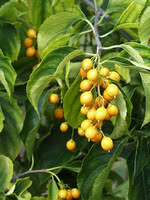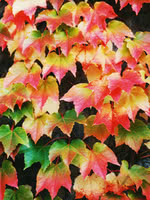Mon-Fri 9am - 5pm Mountain time
American Bittersweet vs Boston Ivy
Celastrus scandens
Parthenocissus tricuspidata
NOT AVAILABLE THIS SEASON - MIGHT RETURN
NOT AVAILABLE THIS SEASON - MIGHT RETURN
American Bittersweet is a deciduous, woody, perennial vine with striking orange to yellow berries that persist into winter. Indigenous to North America, this vine has become so rare it is now considered a protected species.
Excellent for naturalization projects, American Bittersweet attracts birds and other wildlife. Please keep in mind that the plant is toxic to humans and should not be ingested. To ensure the attractive berries are produced, cross-pollination between a male and female plant must occur.
Boston Ivy is an elegant, climbing vine that is often seen as a decorative addition to the sides of buildings. Unlike other climbing vines, this vine does not need a support to grow on. Instead, it clings to surfaces with holdfasts located at the tendril ends.
Boston Ivy is excellent for covering walls, trellises, arbors or fences, but can also be grown on the ground. Don't plant this vine against wood walls, shingle walls, gutters, or shutters as the holdfasts can cause damage over time. This variety will grow as tall and wide as the structure it is grown upon, so make sure you plan your site accordingly.
American Bittersweet Quick Facts
Boston Ivy Quick Facts
Toxicity: All parts of plant are toxic to humans

